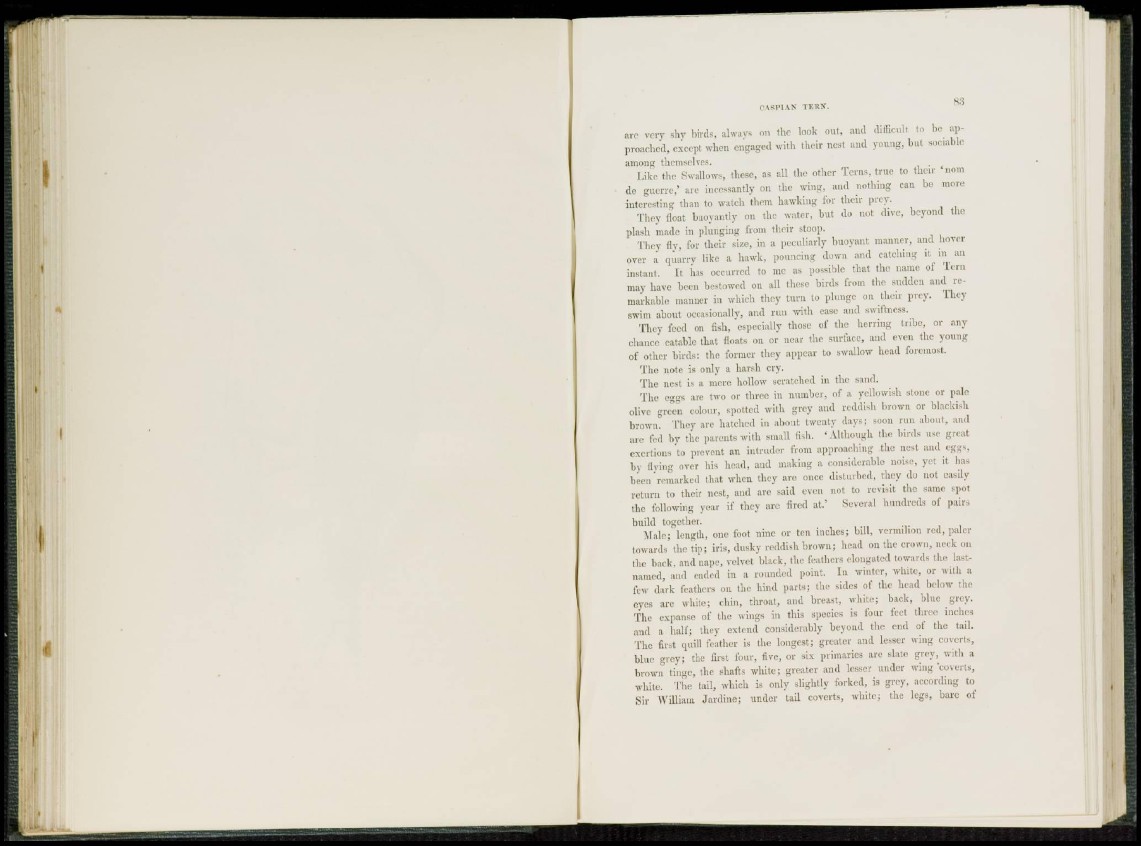
•
are very shy birds, always on the look out, and difficult to be approached,
except when engaged with their nest and young, bill sociable
among themselves.
Like the Swallows, these, as all the other Terns, true to their 'nora
de guerre,' are incessantly on the wing, and nothing can be more
interesting than to watch them hawking for their prey.
They float buoyantly on the water, but do not dive, beyond the
plash made in plunging from their stoop.
They fly, for their size, in a peculiarly buoyant manner, and hover
over a quarry like a hawk, pouncing down and catching it in an
instant. It has occurred to nic as possible that the name of Tern
mav have been bestowed on all these birds from the sudden and remarkable
manner in which they turn to plunge on their prey. They
swim about occasionally, and run with ease and swiftness.
They feed on fish, especially those of the herring tribe, or any
chance eatable that floats on or near the surface, anil even the young
o f other birds: the former they appear to swallow head foremost.
The note is only a harsh cry.
The nest is a mere hollow scratched in the sand.
The eggs are two or three in number, of a yellowish stone or pale
olive green colour, spotted with grey and reddish brown or blackish
brown. They arc hatched in about twenty days; soon run about, and
are fed by the parents with small fish. 'Although the birds use great
exertions to prevent an intruder from approaching the nest and eggs,
by flying over his head, and making a considerable noiso, yet it. has
been remarked that when they are once disturbed, they do not easily
return to their nest, and are said even not to revisit the same spot
the following year if thej arc fired at.' Several hundreds of pairs
build together.
Male; length, o n e foot nine or ten inches; bill, vermilion red, paler
towards the tip; iris, dusky reddish brown; head on the crown, neck on
the back, and nape, velvet black, the leathers elongated towards the lastnamed,
and ended in a rounded point. In winter, white, or with a
few dark feathers on the hind parts; the sides of the head below the
eyes arc white; chin, throat, and breast, white; back, blue grey.
The expanse of the wings in this species is four feet three inches
and a half; they extend considerably beyond the end of the tail.
The first quill feather is the longest; greater and lesser wing coverts,
blue grey; the first four, five, or six primaries are slate grey, with a
brown tinge, the shafts white; greater and lesser under wing'coverts,
white. The tail, which is only slightly forked, is grey, according to
Sir William Jardine; under tail coverts, white; the legs, bare of